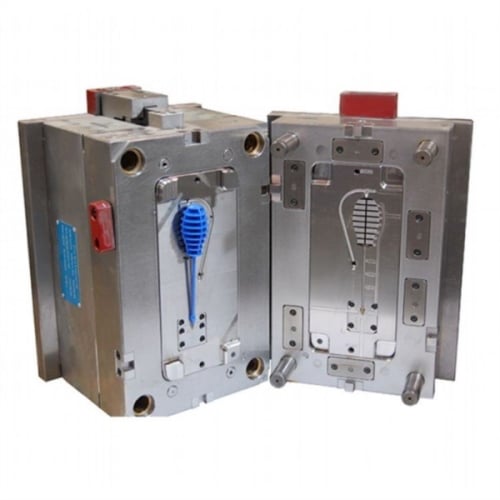Plastic Injection Molding Services
Get quality custom parts for prototyping and production, fast and cost-effective.
Plastic Injection Molding Materials
| Rigid Plastics | Elastomers & Rubber | |
| ABS | PBT | EPDM |
| Acetal | PC | POE |
| ETPU | PMMA | PVC |
| HDPE | POM | TPE |
| LCP | PP | TPR |
| LDPE | PS | TPU |
| PA66 | PTFE | LSR |
* We can source any other materials on request.
Plastic Injection Molding Finishes
Standard. With no secondary processing.
The bead blasting process shoots a blasting media – beads – under high pressure at a part to clean, polish, or roughen it to the desired finish.
A bead blast finish can clean a part’s surface, remove cosmetic defects, create a uniform surface with a dull, satin, or rough texture, and even harden a part’s surface and enhance its durability. It also prepares a part for paint and other coatings.
Bead media includes steel, glass, quartz sand, garnet, etc.
Manufacturers apply bead blasting for materials like metals, plastics, rubber, and glass.
Electroplating is the process of applying a thin layer of one metal to a part by passing a positively charged electrical current through a solution containing dissolved metal ions (anode) and a negatively charged electrical current through the part to be plated (cathode).
The aim is to improve the overall quality of the part. Some benefits include improving corrosion resistance, wear resistance, appearance, lubricity, and solderability.
Steels, nickel, copper-based alloys, and other metals are readily electroplated.
Polishing is the process of creating a shiny and smooth surface, either through physical rubbing of the part or by chemical interference.
The process enhances the aesthetic appeal, prevents corrosion, improves cleanability, and reduces adhesion of the parts.
It produces a surface with significant specular reflection but can reduce diffuse reflection in some materials.
Polishing works excellent with many metals, including aluminum, brass, stainless steel, and steel.
Powder coating is a process of applying a free-flowing, dry, thermoset, or thermoplastic powder to the surface of a part which is then cured under heat or with ultraviolet light.
The process creates a strong, wear- and corrosion-resistant layer that is more durable than standard painting methods.
It works perfectly on metals, plastics, and other materials.
Plastic Injection Molding Capabilities
| Metric | Imperial | |
| Max. Part Size | 1200 x 1600 x 1000 mm | 47.24 x 62.99 x 39.37 in |
| Min. Wall Thickness | 1.2 mm | 0.05 in |
| Max. Part Weight | 60 kg | 132 lb |
Tolerances: GB2828-2003
What is Plastic Injection Molding?
Plastic injection molding is a manufacturing process of producing plastic parts by injecting molten plastic into a metal mold. It is the most cost-effective way to make a plastic part at scale.
Advantages of Plastic Injection Molding
Complex plastic parts
Consistent quality
Exceptional part cosmetics and surface finish
High production rate
Low cost at higher volumes
Low scrap rate
Large selection of thermoplastic and thermoset materials

Plastic Injection Molding FAQs
It depends on the complexity of the design. The typical lead time is between 4-6 weeks, but some complex parts could take two months to design and manufacture a customized mold.
Our customers own their injection mold tools. After a run is complete, the tool will remain at our facilities. We will maintain the mold and can use it to mold your project later. Your Tools can be shipped to you upon request; however, you will be responsible for any associated shipping and packaging costs.
Our customers own their injection mold tools. After a run is complete, the tool will remain at our facilities. We will maintain the mold and can use it to mold your project later. Your Tools can be shipped to you upon request; however, you will be responsible for any associated shipping and packaging costs.
Plastic injection molding offers unmatched versatility. Plastic parts can be used across virtually any industry. However, the most common plastic injection molding applications are typically found in the aerospace, packaging, consumables, electronics, toys, automotive & transportation, construction, robotics, and medical device industries.

